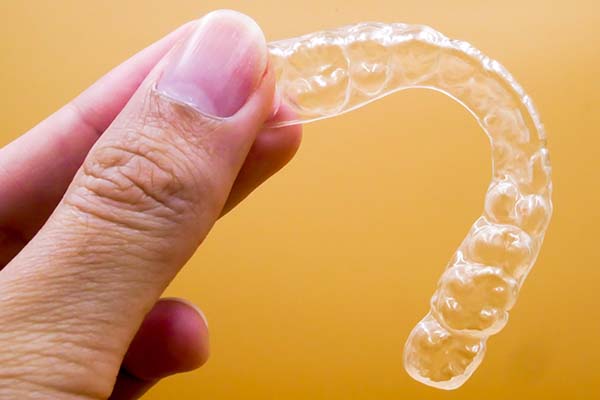 An orthodontist might recommend devices like braces or clear aligners to help straighten your teeth. Both of these appliances work by applying a gentle, constant force on teeth, slowly moving them to a better position over the course of your treatment. Orthodontic issues are pretty common, and the American Association of Orthodontics states up to 75% of people in the U.S. need some form of teeth straightening treatment.
An orthodontist might recommend devices like braces or clear aligners to help straighten your teeth. Both of these appliances work by applying a gentle, constant force on teeth, slowly moving them to a better position over the course of your treatment. Orthodontic issues are pretty common, and the American Association of Orthodontics states up to 75% of people in the U.S. need some form of teeth straightening treatment.
Poor teeth alignment ruins the appearance of your smile, and it makes you more vulnerable to tooth decay and gum disease since they are harder to clean. It can also cause problems chewing or speaking.
Our orthodontist explains what to consider when choosing between aligners and braces
Braces have been around for centuries, and they remain one of the most effective ways to address poor teeth alignment. These appliances are made up of two primary components: brackets that are cemented on each of the patient’s teeth and wires that connect the brackets on each dental arch. Tightening these wires increases the force applied to the wearer’s teeth.
Historically, the most significant complaint people have had about braces is their poor aesthetics. Having a bunch of metal and wires attached to anyone’s teeth ruins the way their smile looks.
Clear aligners are only a few decades old, and they were developed as a solution for metal braces. These aligners are transparent rigid trays that apply precise forces to the patient’s teeth. The patient gets several sets of aligner trays at the start of their treatment that work as a relay team. Each set of aligners are worn for about two weeks, then swapped out with another set. By the time the patient is done with all of their trays, their teeth should be in the targeted position.
Some of the things patients should consider when trying to choose between braces and clear aligners include:
Aesthetics
People who prioritize how their teeth look might be better off with clear aligners. These restorations are virtually invisible in the patient’s mouth, so people the wearer interacts with do not even notice they have anything on their teeth. They get to show off their teeth as they move towards an improved alignment.
Metal braces take over the wearer’s smile since it is impossible to miss when a person has a bunch of metal cemented to their teeth. Less conspicuous types of braces like clear braces provide a better alternative. Instead of metal brackets and wires, these braces come with tooth-colored brackets and transparent wires. They are not virtually invisible like clear aligners, but they are a lot less noticeable than conventional metal braces.
Compliance
Clear aligners are removable devices that need to be worn for at least 22 hours daily. Children and some adults might struggle to keep up with their clear aligners for up to two years. Braces are fixed in place once attached, so that is not an issue.
We can straighten your smile
Ready to address your teeth alignment issues? Call or visit our Monrovia clinic to set up an appointment with our orthodontist.
Request an appointment or call Kathleen C. Hwang Orthodontics at 626-425-9986 for an appointment in our Monrovia office.
Recent Posts
Are you considering your teeth straightening options? Read on to learn more. Imperfect teeth can lower self-esteem and prevent people from smiling naturally. With all the advances in orthodontics, there are more options for getting straighter, healthier teeth. Getting a teeth straightening procedure is well known for cosmetic reasons, but its health benefits are noteworthy…
Space maintainers are common dental pieces that are placed where teeth once were. The empty space created by dislodgement or extraction can put the oral cavity at risk, which is why the role that space maintainers play is so large. Orthodontists and many other dental professionals recommend space maintainers to set the child up for…
The American Association of Orthodontists recommends bringing your child to an orthodontist for a bite evaluation before they reach seven. Early detection of issues with the alignment of a child’s teeth or jaw makes it easier to correct them. The child’s jaw and facial structures are still developing at this point, making it easier to…


